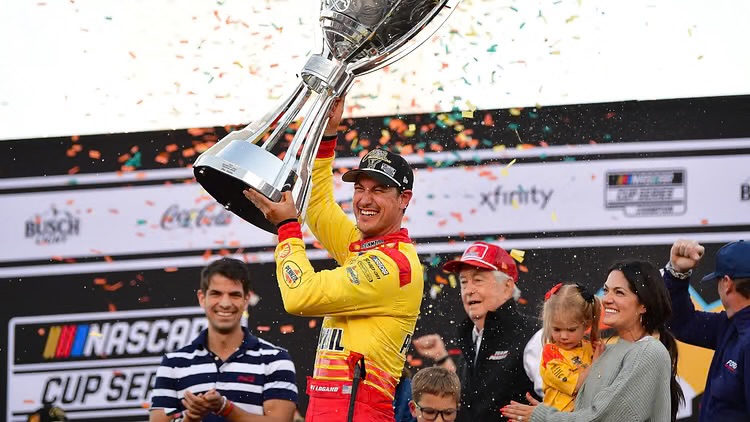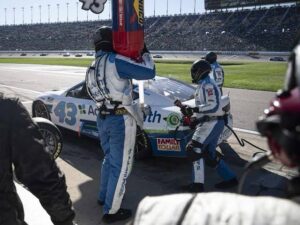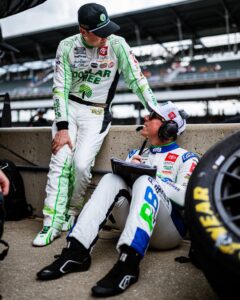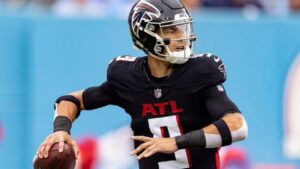For decades, NASCAR’s “Golden Era” of the late 1990s and early 2000s was the gold standard for the sport. Drivers like Jeff Gordon, Dale Earnhardt, and Tony Stewart captivated millions of fans, filling grandstands to capacity and delivering astronomical TV ratings. Fast forward to today, and comparisons to that era have left many critics lamenting NASCAR’s supposed decline.

However, industry insiders suggest the narrative of struggle may be overblown. Despite lower ratings compared to the sport’s heyday, NASCAR teams, drivers, and sponsors are reportedly earning more than ever before, signaling a shift in how the sport measures success in the modern age.
The Ratings vs. Revenue Debate
Yes, the numbers don’t lie: NASCAR’s TV ratings aren’t what they were 20 years ago. The days of 10+ million viewers per race are gone, with current broadcasts typically averaging 2–4 million viewers depending on the event. This decline has been attributed to a variety of factors, including changing entertainment habits, the rise of streaming platforms, and the fragmentation of media consumption.
But while ratings have dipped, the financial picture tells a different story. NASCAR’s recent $1 billion media rights extension with FOX and NBC is evidence that the sport’s value remains strong. Sponsorship deals are becoming more lucrative and diversified, while team owners are reporting stronger financial stability than ever before.
According to a prominent NASCAR insider: “Everybody’s making more money than they ever have. The sport isn’t dying—it’s evolving.”
Why NASCAR Is Still Thriving
1. Diverse Revenue Streams
Modern NASCAR has leaned into digital platforms, streaming partnerships, and sponsorship activations that cater to today’s audience. Teams and tracks now generate income from a mix of TV deals, ticket sales, merchandise, corporate sponsorships, and social media-driven campaigns.
For instance, 23XI Racing, co-owned by Michael Jordan and Denny Hamlin, has brought high-profile sponsors like DoorDash and McDonald’s into the fold, illustrating how the sport is attracting new business partners outside of its traditional base.
2. Broadening Fan Engagement
NASCAR has worked hard to appeal to younger and more diverse fans. Initiatives like the Drive for Diversity program, the introduction of the fan-friendly Garage 56 entry at Le Mans, and the addition of tracks like the Chicago Street Course have reinvigorated interest in the sport. These moves have helped NASCAR expand its reach into urban markets and attract a new generation of fans.
3. Healthier Teams Under the Charter System
The implementation of NASCAR’s charter system in 2016 has provided teams with guaranteed revenue, enabling them to operate with greater financial security. This system has not only stabilized the team ownership model but also made NASCAR an attractive investment for newcomers.
Teams like Trackhouse Racing and Legacy Motor Club have emerged in recent years, proving that fresh ownership and innovative ideas can thrive in this evolving ecosystem.
4. Social Media and Digital Influence
While traditional TV ratings have declined, NASCAR has seen substantial growth in digital engagement. Drivers like Bubba Wallace, Chase Elliott, and Ross Chastain are leveraging platforms like TikTok, Twitter, and Instagram to connect with fans directly. This online presence keeps NASCAR relevant in an era dominated by social media.
“Golden Era” Comparison: A Double-Edged Sword
While nostalgia for the Golden Era persists, many forget that the sport has changed dramatically since then. The late 1990s coincided with NASCAR’s meteoric rise as a cultural phenomenon. It was a time when cable TV ruled, streaming didn’t exist, and traditional sports were the primary form of entertainment.

Today’s sports landscape is far more competitive, with NASCAR vying for attention against a plethora of entertainment options. Comparing the sport’s current state to its Golden Era, without accounting for these changes, paints an incomplete picture.
The Real Indicators of Success
Success in NASCAR can no longer be defined by a single metric like TV ratings. Instead, the sport’s health is measured by the profitability of its teams, the strength of its partnerships, and its ability to adapt to changing times.
While it’s true that NASCAR faces challenges—such as maintaining its core fanbase while appealing to new audiences—the broader outlook is far from bleak. Tracks are drawing


































































































